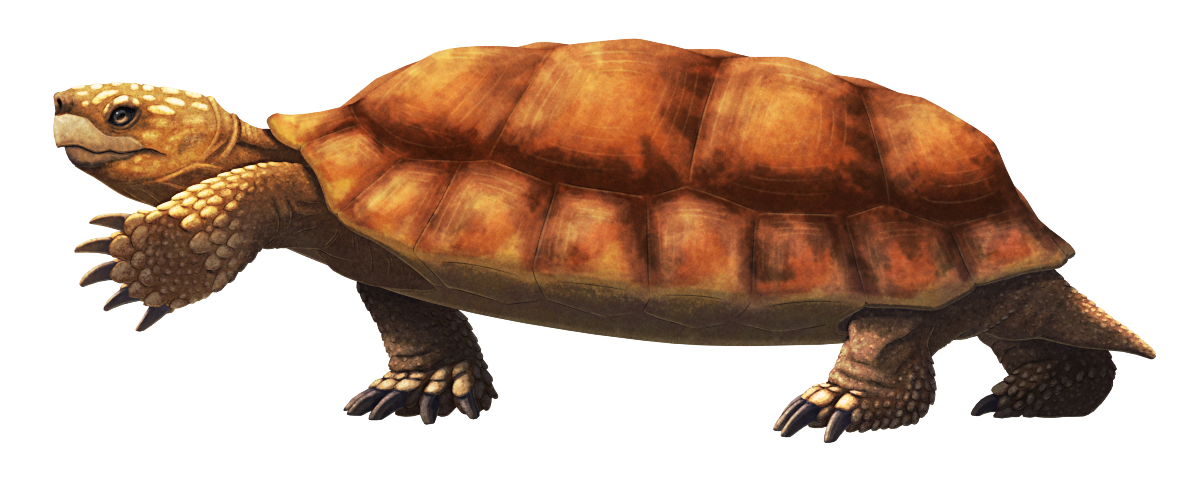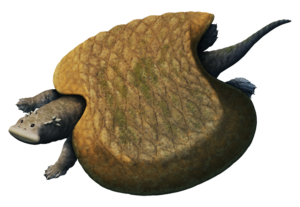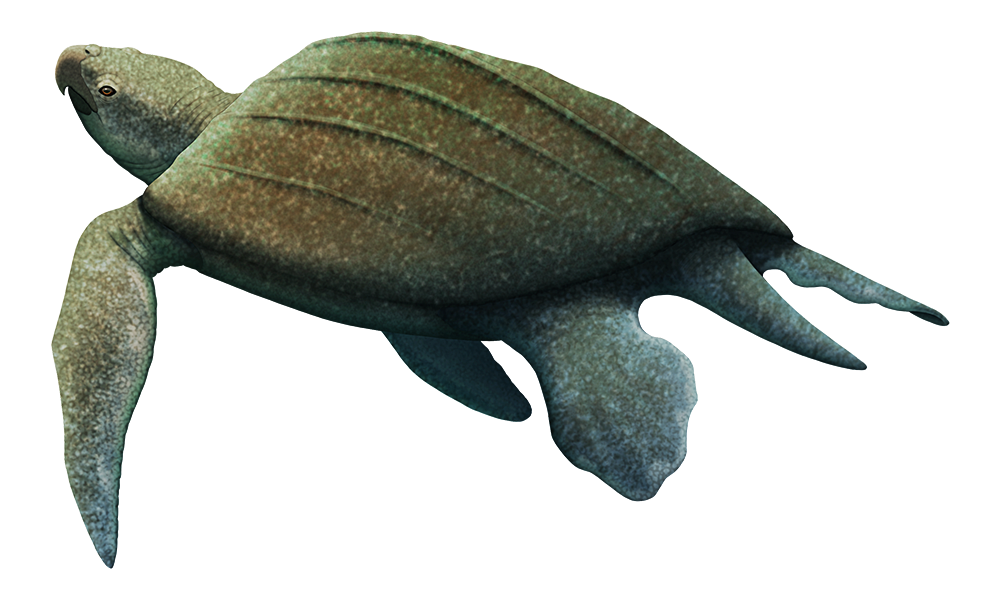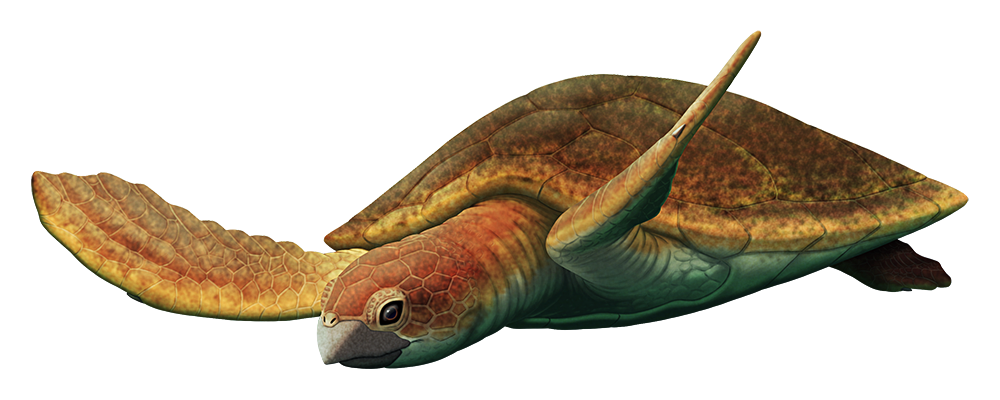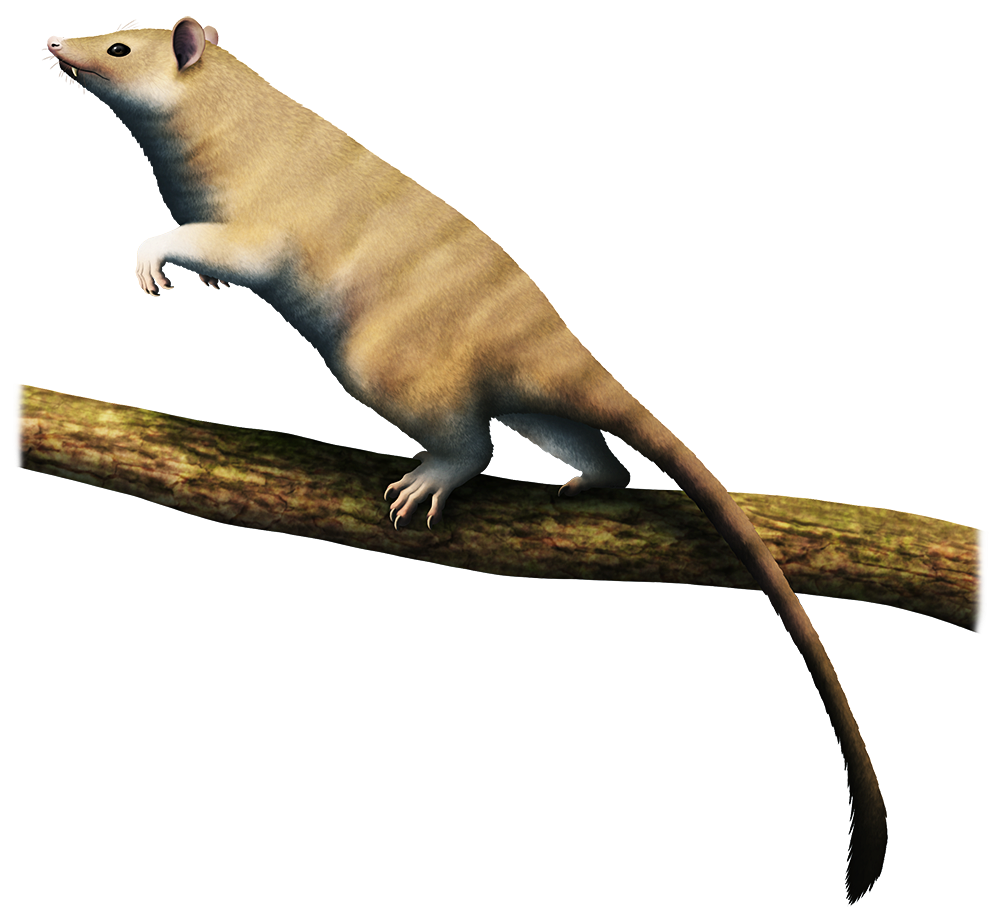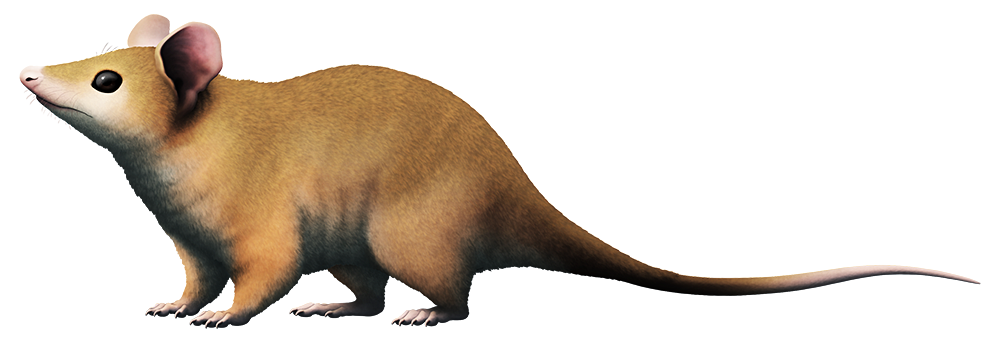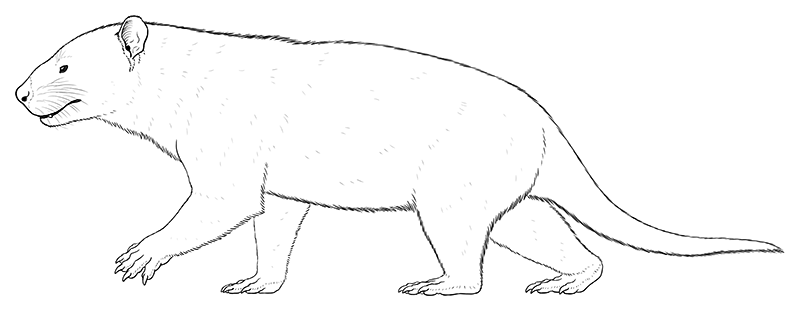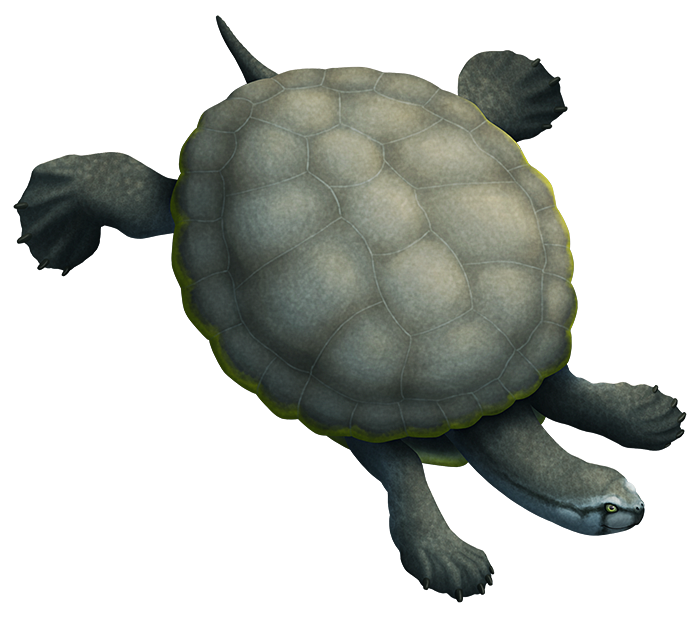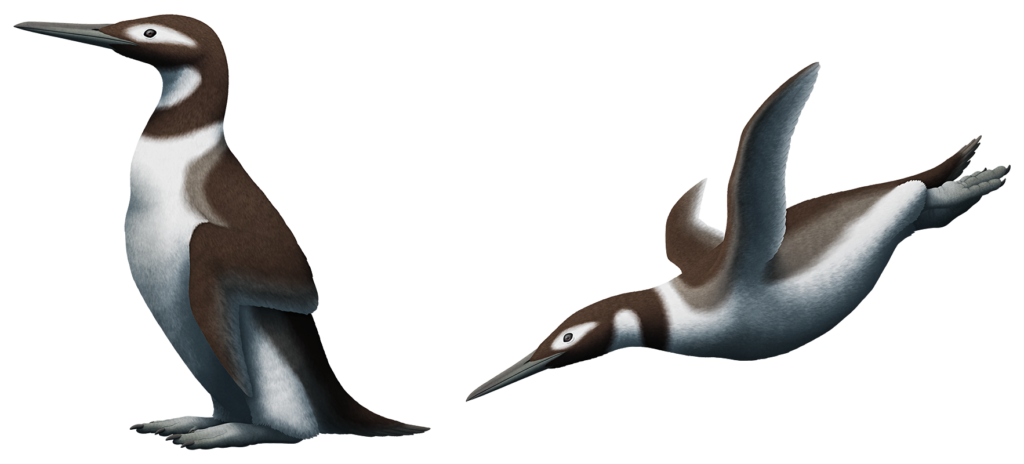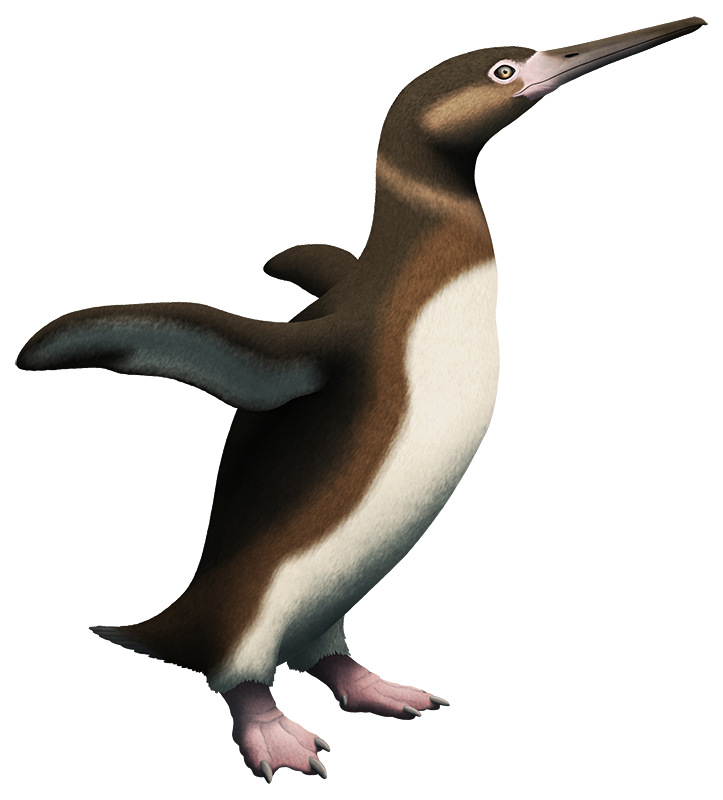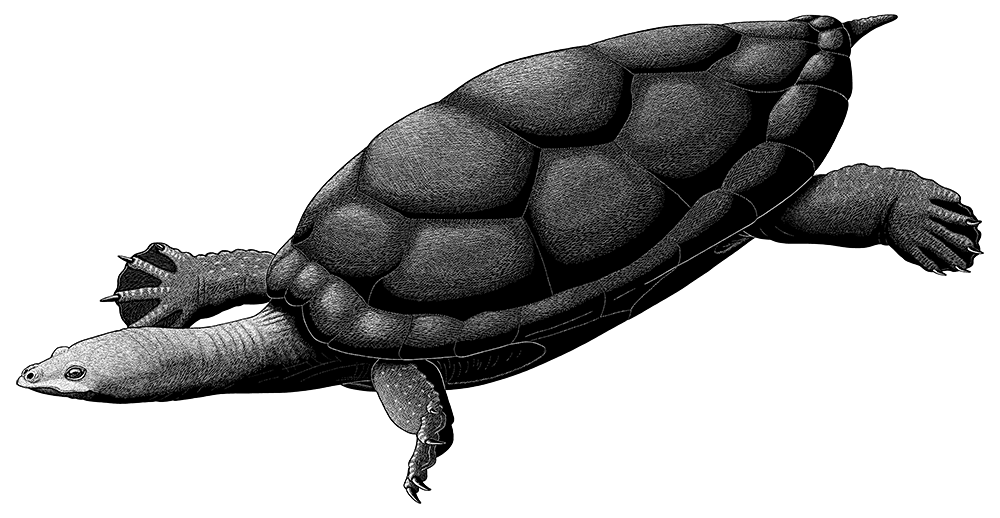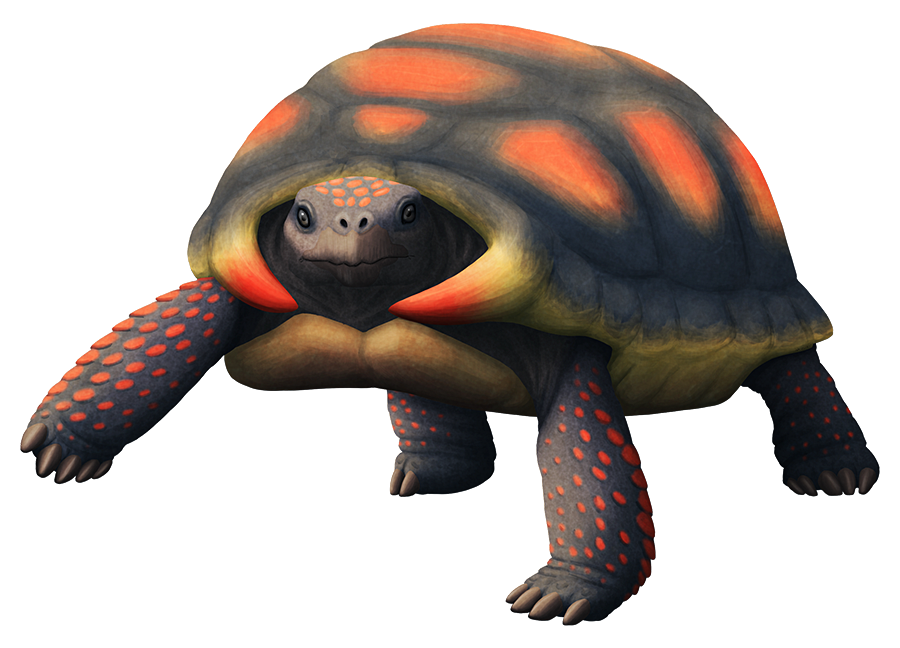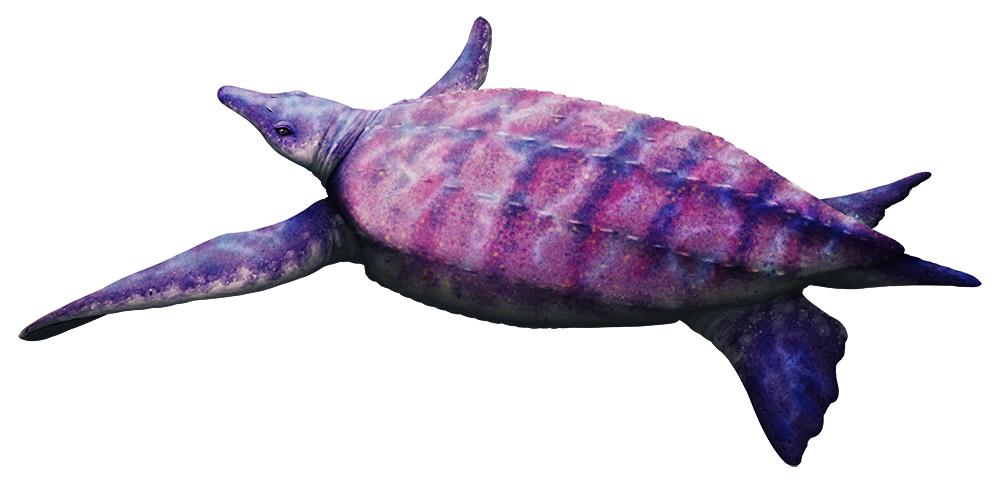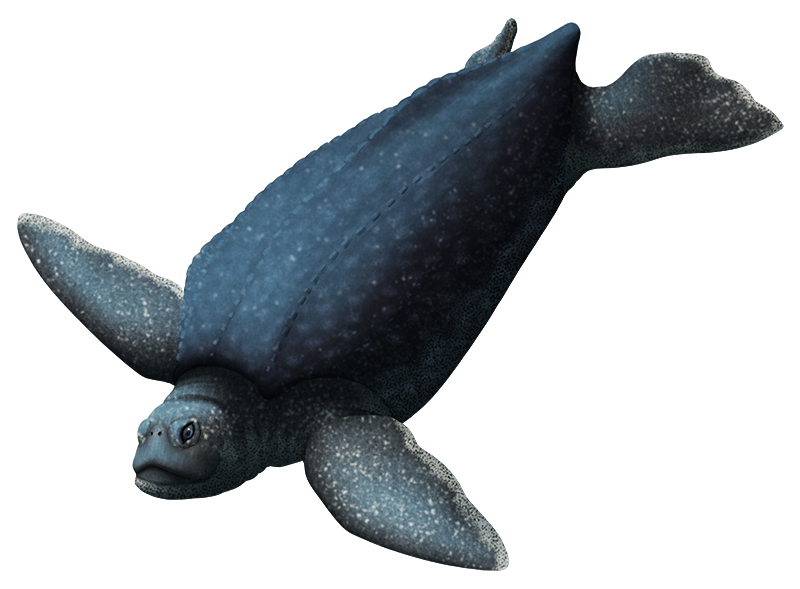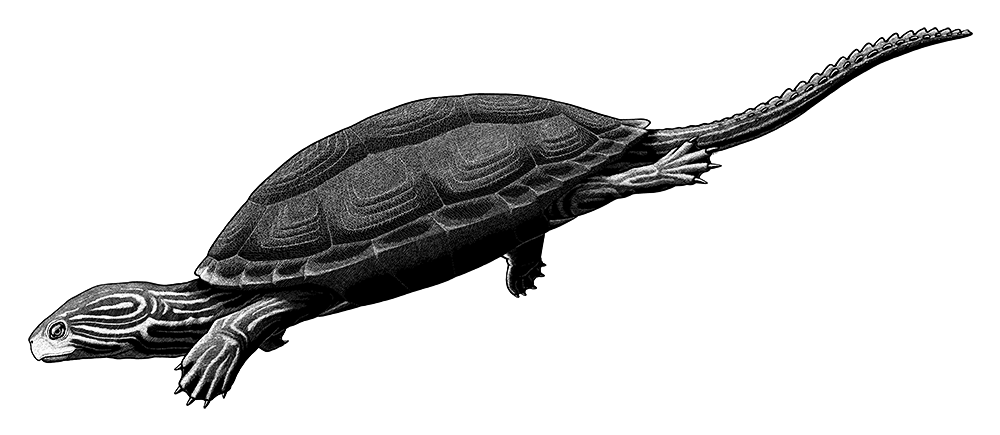Jiangxichelys neimongolensis was a terrestrial turtle that was part of an extinct group known as nanhsiungchelyids, whose closest living relatives today are the aquatic softshell turtles.
(This species was previously known as “Zangerlia” neimongolensis, but has since been moved into the genus Jiangxichelys instead.)
It lived towards the end of the Cretaceous, about 75-71 million years ago, in what is now the Gobi Desert – which at the time was more of a semi-arid climate with both rivers and sand dunes.
Its 60cm long (~2′) carapace had a long wide shape that made it appear rather flattened from the front, but not to quite as much an extreme as its larger American cousin Basilemys.
Several fairly well-preserved specimens have been found that appear to have been buried alive, probably either engulfed by sudden sandstorms or trapped in collapsing burrows. This has preserved some anatomical details previously unknown in nanhsiungchelyids, such as the pattern of scales on top of the head and the presence of large bony osteoderms on the underside of the front toes, which may have aided with traction on loose sandy ground.
Continue reading “Jiangxichelys neimongolensis”
